Neuroassembly
About us...
IBIO Neuroassembly is a monthly seminar series organized by MSc Integrative Neuroscience students mentored by Prof. Kristine Krug, at the Otto-von-Guericke University, Magdeburg, Germany. This initiative aims to connect both students and the neuroscience community in Magdeburg with renowned as well as upcoming researchers to discuss cutting edge and significant topics in neuroscience in an educational forum.
Please do not hesitate to contact us with questions, comments, feedback or if you would like to suggest a speaker or become a sponsor.
Upcoming talks
![SaraLazar cropped[1593] SaraLazar cropped[1593]](/lisp_media/Neuroassembly/SaraLazar+cropped%5B1593%5D-height-1100-width-1000.jpeg)
Thursday 12th January, 3pm (CET) - via Zoom (Please contact us via email for details!)
Impact of meditation practice on brain structure & function
Dr. Sara W. Lazar
Associate Researcher in Psychiatry, Massachusetts General Hospital &
Assistant Professor in Psychology at Harvard Medical School
In this talk I will discuss the impact of meditation practice on brain structure and function, and how those neural changes relate to improvements in stress, pain tolerance, fear conditioning, and healthy aging.
Past talks

Wednesday 23rd November, 3pm (CET) - via Zoom (Please contact us via email for details!)
Intraneural neuroprostheses to understand and restore neural functions
Prof. Dr. Silvestro Micera
The BioRobotics Institute and Department of Excellence in Robotics and AI, Scuola Superiore Sant'Anna, Pisa, I
Bertarelli Foundation Chair in Translational Neuroengineering, Engineering Ecole Polytechnique Federale de Lausanne (EPFL), Lausanne, CH
Neuroengineering is a novel discipline combining engineering including micro and nanotechnology, electrical and mechanical, and computer science with cellular, molecular, cognitive neuroscience with two main goals: (i) increase our basic knowledge of how the nervous system works; (ii) develop systems able to restore functions in people affected by different types of neural disability. In the past years, several breakthroughs have been reached by neuroengineers in particular on the development of neurotechnologies able to restore sensorimotor functions in disabled people. In this presentation, I will provide several examples of how implantable interfaces can be used to restore sensory (tactile feedback for hand prostheses, vision), motor (grasping, locomotion).

Tuesday 11th October, 4pm (CET) - Ebbinghaus Room at Leibniz Institute for Neurobiology
From Computation to Large-scale Neural Circuitry in Belief Updating
Prof. Dr. Tobias H Donner
Head of Section Computational Cognitive Neuroscience, Department of Neurophysiology & Pathophysiology, University Medical Center Hamburg-Eppendorf (UKE), Germany
Many decisions under uncertainty entail dynamic updating belief: multiple pieces of evidence informing about the state of the environment are accumulated across time to infer the environmental state, and choose a corresponding action. Traditionally, this process has been conceptualized as a linear and perfect (ie, without loss) integration of sensory information along purely feedforward sensory-motor pathways. Yet, natural environments can undergo hidden changes in their state, which requires a non-linear accumulation of decision evidence that strikes a tradeoff between stability and flexibility in response to change. How this adaptive computation is implemented in the brain has remained unknown. in this talkI will present an approach that my laboratory has developed to identify evidence accumulation signatures in human behavior and neural population activity (measured with magnetoencephalography, MEG), across a large number of cortical areas. Applying this approach to data recorded during visual evidence accumulation tasks with change-points, we find that behavior and neural activity in frontal and parietal regions involved in motor planning exhibit hallmarks signatures of adaptive evidence accumulation. The same signatures of adaptive behavior and neural activity emerge naturally from simulations of a biophysically detailed model of a recurrent cortical microcircuit. The MEG data further show that decision dynamics in parietal and frontal cortex are mirrored by a selective modulation of the state of early visual cortex . This state modulation is (i) specifically expressed in the alpha frequency band, (ii) consistent with feedback of evolving belief states from frontal cortex, (iii) dependent on the environmental volatility, and (iv) amplified by pupil-linked arousal responses during evidence accumulation. Our findings link normative decision computations to recurrent cortical circuit dynamics and highlight the adaptive nature of decision-related feedback processing in the brain.

Monday 26th September, 5pm (CET) - Ebbinghaus Room at Leibniz Institute for Neurobiology & Zoom (please contact us for Zoom details)
Naturalistic Neuronal Activity & Behavior
dr Marieke Scholvinck
Havenith & Schölvinck Lab - Group leader
Ernst Strüngmann Institute for Neuroscience in Cooperation with Max Planck Society, Frankfurt, Germany
Humans may not be good at multitasking – but their brains are! At any given moment, the brain deals with an overwhelming amount of sensory input, combines this with ongoing internal processes such as attention, and generates complex and continuous behavior that in turn shapes sensory experience. In contrast, most neuroscience experiments feature simplified stimuli, restricted behavior (eg, button presses), and extensive post-hoc averaging of neuronal responses. In my talk, I will show you some of the consequences of this approach, and our attempt at putting the brain back into its 'natural habitat'.We elicit natural behavior in mice and monkeys in a realistic virtual reality (VR) environment, and relate detailed quantifications of their behavior in the VR to neuronal population activity from several brain areas without averaging across time.
 Thursday 14 th July , 4pm (CET) - via Zoom (Please contact us via email for details!)
Thursday 14 th July , 4pm (CET) - via Zoom (Please contact us via email for details!)
Key principles that lead to cognitive performance variability in personalized virtual brains
Prof. Dr. Petra Ritter, MD PhD
BIH Johanna Quandt Professor for Brain Stimulation
Director, Brain Stimulation Section
Berlin Institute of Health and Department of Neurology, Charite University Hospital; Germany
With personalized computational brain network modeling we investigated how decision-making depends on the synchrony of functional brain networks. We used functional connectivity (FC), structural connectivity (SC) and cognitive test results from 650 subjects of the Human Connectome Project to build personalized brain network models. We then coupled the individual large-scale models with functional attractor circuits and showed how inputs from the large-scale brain network modulate decision-making and working memory reproducing empirical relationships between FC and behavioral performance. Our simulation results mechanistically link excitation-inhibition balance with fluid intelligence, decision-making, working memory, reaction times and brain synchrony.
 Tuesday 14th June , 4pm (CET) - via Zoom
Tuesday 14th June , 4pm (CET) - via Zoom
Motives and Modulators of Human Decision Making
Prof. Dr. Soyoung Q Park
Professor of Decision Neuroscience and Nutrition at the Charité – Universitätsmedizin Berlin (Neuroscience Research Center)
Head of the Department of Decision Neuroscience and Nutrition at the German Institute for Human Nutrition
Did we eat spaghetti for lunch because we saw our colleague eat spaghetti? What drives a risk decision? How can our breakfast impact our decisions throughout the day? Research from different disciplines such as economics, psychology and neuroscience have attempted to investigate the motives and modulators of human decision making. Human decisions can be flexibly modulated by the different experiences we have in our daily lives, at the same time, bodily processes, such as metabolism can also impact economic behavior. These modulations can occur through our social networks, through the impact of our own behavior on the social environment, but also simply by the food we have eaten.Here, I will present a series of recent studies from my lab in which we shed light on the psychological,

Thursday 7th April , 5pm (CET) - IBIO(House 91) R001 & Zoom (please contact us for Zoom details)
Neuronal correlates of dynamic decision-making in the frontal cortex of primates
Prof. Stefano Ferraina, MD PhD
Full Professor of Neurophysiology at the Department of Physiology and Pharmacology , Sapienza University; Rome, Italy
Many of our decisions are made by responding to environmental stimuli, the meaning of which must be interpreted. How we catch up with the meaning of this information often depends on previous experience. For example, when we bet on the result of the match between two football teams, we clearly have in mind their position in the scale of values that we consider most relevant. The more distant they are in the hierarchical organization the easier - but not sure - it will be to predict the outcome. Even for teams that rarely clashed directly. These kinds of decisions and reasoning are called inferential. Humans, and many other species of animals, can solve so-called transitive inference (TI) tasks designed with various levels of difficulty.In this talk, I will describe the TI task to which we trained monkeys and the results observed in the modulation of neural activity recorded at the level of two areas of the frontal lobe differently involved in the process that leads from stimulus recognition to decision making.

Thursday 24th March , 5pm (CET) via zoom
Hormonal Contraceptives & The Brain
Prof. Dr. Belinda Angela Pletzer
University Professor at the Center for Cognitive Neuroscience, Department of Psychology; University of Salzburg, Austria
Hormonal contraceptives have been on the market for over 60 years now and are used by an estimated number of 150 million women worldwide. While evidence for the effects of endogenous hormones on the brain is accumulating, few studies have investigated the effects of synthetic steroids as contained in hormonal contraceptives on the brain. This talk will address (i) the mechanisms of action by which hormonal contraceptives may affect the brain, (ii) the scarce results that are currently available regarding hormonal contraceptive effects on the brain, (iii) methodological challenges of the field, as well as (iv) methodological implications for neuroscientific studies.

Thursday 10th February , 5pm (CET) via zoom
Computational Psychiatry - There is mathematics in madness
Prof. Dr. Quentin Huys
Clinical Associate Professor of Computational Psychiatry in the Division of Psychiatry and the Institute of Neurology, University College London, UK
Deputy director of the Max Planck UCL Center for Computational Psychiatry and Aging Research
Computational psychiatry is a rapidly growing field attempting to translate advances in computational neuroscience and machine learning into improved outcomes for patients suffering from mental illness. It encompasses both data-driven and theory-driven efforts. In this lecture, I will focus on a tutorial introduction into recent advances in theory-driven work. The starting point is to argue that the brain is a computational organ. As such, an understanding of the illnesses arising from it will require a computational framework.I will cover three theoretical approaches that have deep mathematical connections: dynamical systems, Bayesian inference and reinforcement learning.Finally, I will close with a discussion of both general and specific challenges for the field, and suggest ways forward.

Tuesday 11th January , 4pm (CET) via zoom
Mutagenesis screens define conserved functions of metabolism and protein synthesis in longevity
PI. Dr Martin Denzel
Principal Investigator at the Max Planck Institute for Biology of Aging; Cologne, Germany
dr Martin Denzel is a research group leader at the Max Planck Institute for Biology of Aging in Cologne, Germany. He studies the molecular underpinnings of longevity using high-resolution genetic screens in multiple organisms, including worms and mice. Martin investigates energy and protein metabolism as well as conserved stress signaling pathways that can be tuned to extend survival. To elucidate underlying molecular mechanisms Martin employs structural biology approaches. Recently, his team showed that inhibition of the integrated stress response (ISR) extends lifespan. For his basic research, Martin received support from all major European and German funding organizations, including EMBO and ERC. Martin aims to apply basic research and co-founded the start-up company Acus Laboratories.
Thursday 16th December , 4pm (CET) via zoom
Sex differences in stress regulation of cognition
Prof. Dr. Debra Bangasser
Principal Investigator of the Neuroendocrinology and Behavior Laboratory;
Associate Professor at the Department of Psychology and Neuroscience Program, Temple University, Philadelphia, PA
Women are more likely than men to suffer from psychiatric disorders with hyperarousal symptoms, including posttraumatic stress disorder (PTSD) and major depression. In contrast, women are less likely than men to be diagnosed with schizophrenia and attention deficit hyperactivity disorder (ADHD), which share cognitive impairments as a feature. Stressful events exacerbate symptoms of the aforementioned disorders. My lab studies how sex differences in stress responses can bias males and females towards different pathology. In this talk, I will discuss how differential responses to the stress neuropeptide, corticotropin-releasing factor (CRF), and repeated stress exposure can contribute to differences in arousal, cognition, and attention in male vs. female rats.

Tuesday 23rd November , 5pm (CET) via zoom
Biological and bionic hands: Natural neural coding and artificial perception
Prof. Dr. Sliman J. Bensmaia
Department of Organismal Biology and Anatomy, Neuroscience Institute, Committee on Computational Neuroscience, University of Chicago, Chicago, IL, USA
Our ability to manipulate objects dexterously relies fundamentally on sensory signals originating from the hand. To restore motor function with upper-limb neuroprostheses requires that somatosensory feedback be provided to the amputee or tetraplegic patient. Given the complexity of state-of-the-art prosthetic limbs, and thus the huge state-space they can traverse, it is desirable to minimize the need for the user to learn associations between events impinging upon the limb and arbitrary sensations. With this in mind, we seek to develop approaches to intuitively convey sensory information that is critical for object manipulation through electrical activation of sensory neurons in the nerves or in the somatosensory cortex.To this end, we leverage our understanding of natural neural coding to construct encoding algorithms for artificial touch.
Tuesday 26th October , 5 pm via zoom
Brain circuits for fear attenuation
dr Bianca Silva
Italian National Research Council (CNR), Institute of Neuroscience, Humanitas Research Hospital, Milan, Italy
Fear and trauma generate some of the longest-lived memories. Despite the corresponding need to understand how such memories can be attenuated, the underlying brain circuits remain unknown. Combining neuronal circuit mapping, fiber photometry, chemogenetic and closed-loop optogenetic manipulations in mice, we have recently shown that the extinction of remote (30-day old) fear memories depends on thalamic nucleus reuniens (NRe) inputs to the basolateral amygdala (BLA ). We found that remote, but not recent (1-day old), fear extinction activates NRe to BLA inputs, which become potentiated upon fear reduction. Both monosynaptic NRe to BLA, and total NRe activity increase shortly before freezing cessation, suggesting that the NRe registers and transmits safety signals to the BLA. Accordingly, pan-NRe and pathway-specific NRe to BLA inhibition impairs, while their activation facilitates fear extinction. These findings identify the NRe as a crucial BLA regulator for extinction, and provide the first functional description of the circuits underlying the attenuation of consolidated fear memories.

Tuesday 28th September, 4 pm via Zoom
The genetic risk factor FKBP5 as a target to boost stress resilience
PD dr Mathias V Schmidt
Max Planck Institute of Psychiatry, Munich, Germany
The increasing rate of depression represents a growing threat to our society and a dysregulation of the body's main stress system is a major hallmark of this disorder. The co-chaperone FK506-binding protein 51 (FKBP51) is a very promising target molecule directly regulating stress hormone activity. We utilize conditional FKBP51 knockout or overexpression in specific brain regions in combination with environmental challenges to assess the contribution of FKBP51 to stress vulnerability. Our results demonstrate that manipulating FKBP51 levels in specific brain areas ages the animals' emotional and cognitive behavior as well as metabolic control, which can lead to improved stress resilience.

Tuesday 31st August, 17:00 via zoom
The role of the basal ganglia - superior colliculus circuit in perceptual decision making.
Professor Michelle Basso
The University of California, Los Angeles, USA
Perceptual decisions arise after considering the available sensory evidence. When sensory information is unreliable, a good strategy is to rely on previous experience in similar situations to guide decisions. What brain areas are involved in how people combine past experience and sensory information to make perceptual decisions is unknown. We developed a novel, perceptual decision-making task and manipulated the statistics of the sensory stimuli presented to people with Parkinson's disease (PD), a neurodegenerative disease involving the basal ganglia and healthy participants to determine the past experience of decision-making influence. We discovered that people with PD are impaired at combining previously learned information with current sensory information to guide decisions.We modeled the results using the drift-diffusion model (DDM) and found that the impairment corresponds to a failure in adjusting the amount of sensory evidence needed to make a decision. These results led us to explore how decision thresholds are established in the brain. To understand this, trained monkeys performed different decision-making tasks, involving detection as well as discrimination. Applying a signal detection theory analysis as well as computational modeling of behavioral data using the DDM, we found strong evidence that the superior colliculus, a brainstem structure that received strong modulatory input from the basal ganglia, plays a causal role in perceptual decision making by regulating how evidence is computed for form decisions.Trained monkeys performed different decision-making tasks, involving detection as well as discrimination. Applying a signal detection theory analysis as well as computational modeling of behavioral data using the DDM, we found strong evidence that the superior colliculus, a brainstem structure that received strong modulatory input from the basal ganglia, plays a causal role in perceptual decision making by regulating how evidence is computed for form decisions. Trained monkeys performed different decision-making tasks, involving detection as well as discrimination.Applying a signal detection theory analysis as well as computational modeling of behavioral data using the DDM, we found strong evidence that the superior colliculus, a brainstem structure that received strong modulatory input from the basal ganglia, plays a causal role in perceptual decision making by regulating how evidence is computed for form decisions.
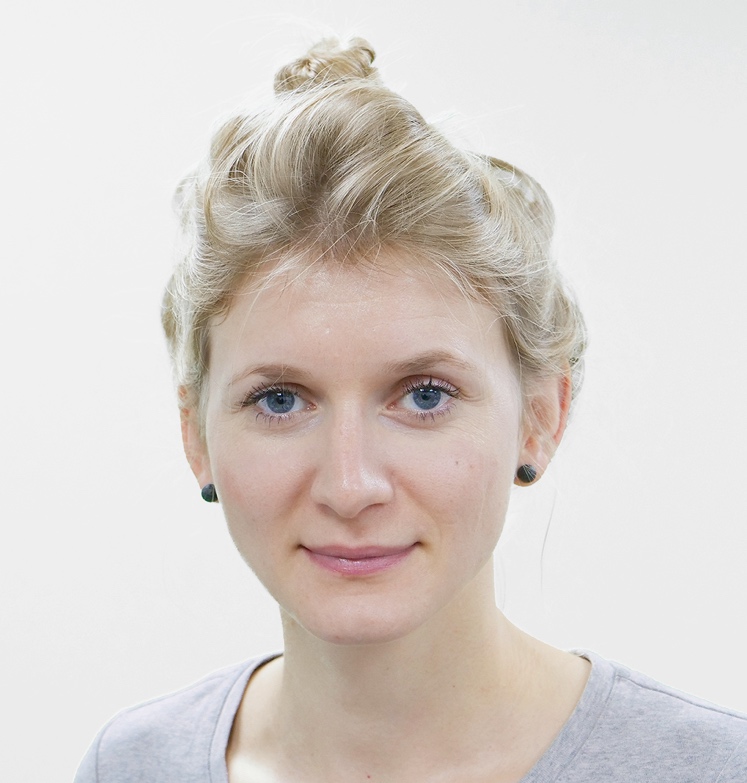
Tuesday 13th July, 16:00 via zoom
The AI Neuroscientist - a new imaging framework combining real-time fMRI and machine learning with applications in health and disease.
dr Romy Lorenz
University of Cambridge, Stanford University and the Max Planck Institute for Human Cognitive & Brain Sciences
Cognitive neuroscientists are often interested in broad research questions, yet use overly narrow experimental designs by considering only a small subset of possible experimental conditions. This limits the generalizability and reproducibility of many research findings. In this talk, I present an alternative approach, “The AI Neuroscientist”, that resolves these problems by combining real-time fMRI with a branch of machine learning, Bayesian optimization. Neuroadaptive Bayesian optimization is an active sampling approach that allows to intelligently search through large experiment spaces with the aim to optimize an unknown objective function.It thus provides a powerful strategy to efficiently explore many more experimental conditions than is currently possible with standard neuroimaging methodology. Alongside methodological details on non-parametric Bayesian optimization using Gaussian process regression, I will present results from three different studies where we applied the method to: (1) better understand the functional role of frontoparietal networks, (2) map cognitive dysfunction in aphasic stroke patients, and (3) tailor non-invasive brain stimulation parameters to a particular research questions. I will conclude my talk in discussing how Bayesian optimization can be combined with study preregistration to cover exploration, mitigating researcher bias more broadly and improving reproducibility.(2) map cognitive dysfunction in aphasic stroke patients, and (3) tailor non-invasive brain stimulation parameters to a particular research questions. I will conclude my talk in discussing how Bayesian optimization can be combined with study preregistration to cover exploration, mitigating researcher bias more broadly and improving reproducibility. (2) map cognitive dysfunction in aphasic stroke patients, and (3) tailor non-invasive brain stimulation parameters to a particular research questions. I will conclude my talk in discussing how Bayesian optimization can be combined with study preregistration to cover exploration, mitigating researcher bias more broadly and improving reproducibility.
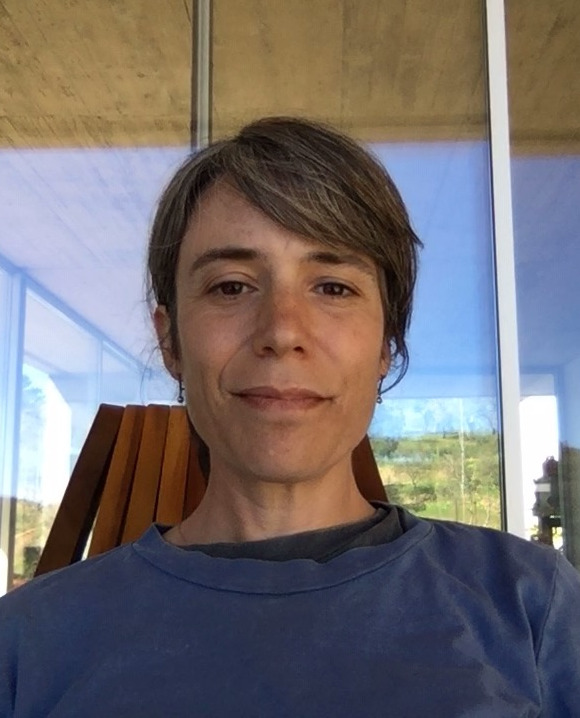
Tuesday 15th June, 5pm via zoom
Neural circuits controlling sexual behavior
dr Susana Lima
Champalimaud Neuroscience Program, Lisbon, Portugal
Sex is intrinsically rewarding but can also be costly, by increasing the risk of predation or infection. Therefore, it is not surprising that natural selection reinforced mechanisms that underlie the execution of species-specific copulation patterns, ensuring that they are initiated when fertilization is most likely, and inhibited after consumption. In many species, this is achieved by placing ovulation and sexual receptivity under the control of sex hormones in females, and by the establishment of a refractory period after ejaculation in males.We study female and male sexual behavior, using the mouse as model system and employing a combination of electrophysiological and genetically encoded imaging and anatomical tools to understand how the coordinated activity of different neuronal populations underlies the flexible,

Tuesday 18th May, 4pm via zoom
Turbulence-like dynamics in the human brain
Professor Gustavo Deco
Universitat Pompeu Fabra, Barcelona, Spain
Turbulence is a special dynamical state driving many physical systems by way of its ability to facilitate fast energy / information transfer across scales. These qualities are important for brain function, but it is currently unknown if the brain also exhibits turbulence as a fundamental organizational principle. Using large-scale neuroimaging data from 1003 healthy participants, we demonstrate both empirically and through the use of a computational whole-brain model that human brain dynamics is organized around a turbulent homogeneous isotropic functional core. We show the economy of anatomy of this functional core following the exponential distance rule of anatomical connections as a cost-of-wiring principle,which displays a turbulent-like power scaling law for functional correlations in a broad spatial range suggestive of a cascade of information processing. Further investigating this, we use the theory of turbulence in coupled oscillators in a whole-brain model to demonstrate that the best fit of our model to the data corresponds to a region of maximally developed amplitude turbulence, which also corresponds to maximal sensitivity to the processing of external stimulations (information capability). This establishes a firm link between turbulence and optimal brain function. Overall, our results reveal a novel way of analyzing and modeling whole-brain dynamics that for the first time ever establishes turbulence as a fundamental basic principle of brain organization.we use the theory of turbulence in coupled oscillators in a whole-brain model to demonstrate that the best fit of our model to the data corresponds to a region of maximally developed amplitude turbulence, which also corresponds to maximal sensitivity to the processing of external stimulations ( information capability). This establishes a firm link between turbulence and optimal brain function. Overall, our results reveal a novel way of analyzing and modeling whole-brain dynamics that for the first time ever establishes turbulence as a fundamental basic principle of brain organization.we use the theory of turbulence in coupled oscillators in a whole-brain model to demonstrate that the best fit of our model to the data corresponds to a region of maximally developed amplitude turbulence, which also corresponds to maximal sensitivity to the processing of external stimulations ( information capability). This establishes a firm link between turbulence and optimal brain function. Overall, our results reveal a novel way of analyzing and modeling whole-brain dynamics that for the first time ever establishes turbulence as a fundamental basic principle of brain organization. which also corresponds to maximum sensitivity to the processing of external stimulations (information capability). This establishes a firm link between turbulence and optimal brain function.Overall, our results reveal a novel way of analyzing and modeling whole-brain dynamics that for the first time ever establishes turbulence as a fundamental basic principle of brain organization. which also corresponds to maximum sensitivity to the processing of external stimulations (information capability). This establishes a firm link between turbulence and optimal brain function. Overall, our results reveal a novel way of analyzing and modeling whole-brain dynamics that for the first time ever establishes turbulence as a fundamental basic principle of brain organization.
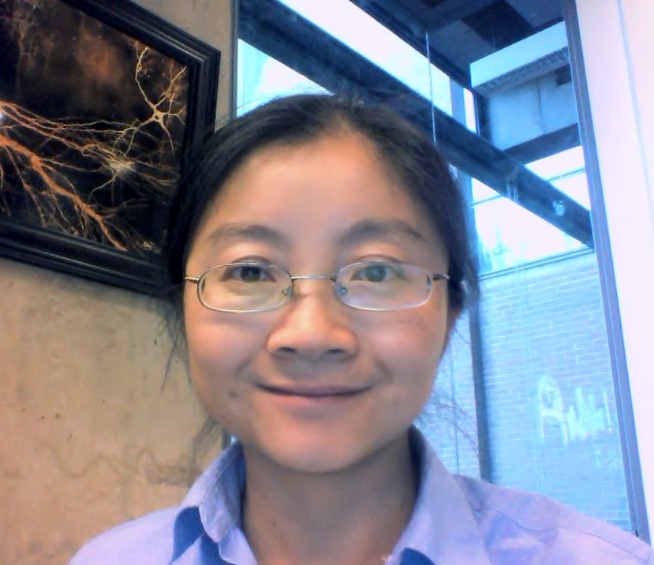
Tuesday 20th April, 5 pm via Zoom
The roles of the caudate nucleus in reward-biased visual decisions
dr long thing,
Department of Neuroscience, University of Pennsylvania, USA
Decision making is a complex process that interprets sensory information within the context of reward contingency, task goal and intrinsic bias, etc. How and where this process is implemented in the brain remain unclear. The basal ganglia have been shown to contribute causally to reward-based economic decisions and to noisy sensory evidence-based perceptual decisions, leading to the hypothesis that sensory and reward information may be combined within the basal ganglia to support decision formation. In my talk, I will present our new results on how the caudate nucleus encodes combined signals at the single-neuron level and how disruption of caudate activity influences decision performance.These results further support the idea that the basal ganglia are a key player in the complex decision process.
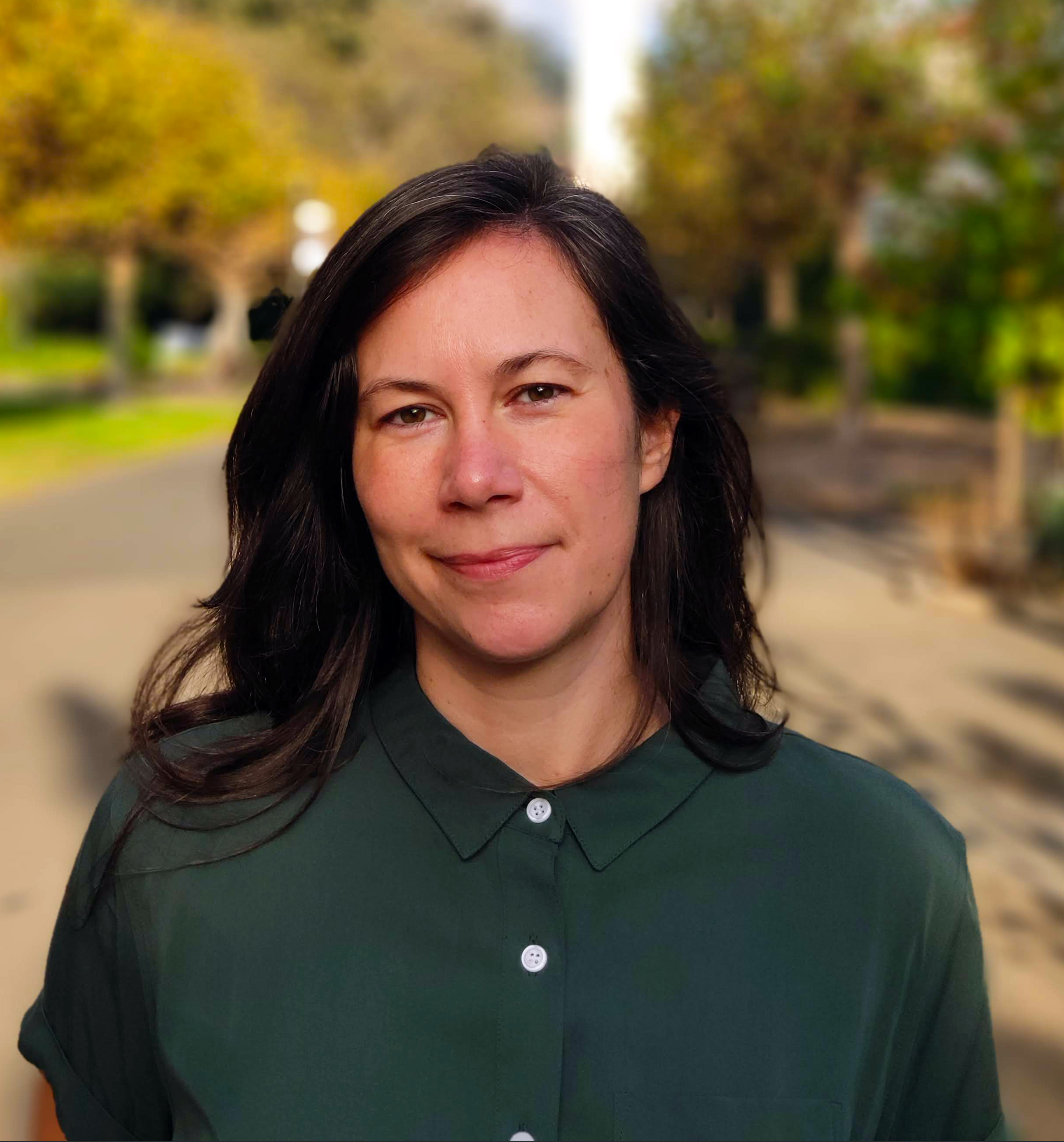
Tuesday 30th March, 4pm via zoom
Neural circuits of the serotonin system: from anatomical connectivity to activity dynamics during behavior
dr Iskra Pollak Dorocic
Stockholm University, Sweden
The neuromodulator serotonin plays a central role in many brain functions: from homeostatic regulation to complex functions in psychiatric disorders. However, it has been challenging to understand the precise role of serotonin in behaviors relevant to mood disorders such as depression and the mechanism and efficacy of selective serotonin reuptake inhibitors (SSRIs) still remains unclear. There is a need to understand the system on a neural circuit level and integrate connectivity, neurochemical, physiological, and behavioral functions.
Using viral-genetic tools in transgenic mice, we can directly target serotonin neurons to map their brain-wide connectivity and link their activity to defined behaviors.In this talk I will describe studies of neural circuits of the serotonin system which: 1) reveal the anatomical architecture of whole-brain connectivity of the system using retrograde transsyaptic tracing, 2) define the cell-type heterogeneity within the main serotonergic nucleus and its connectivity with the rest of the brain, and 3) record and manipulate real-time activity dynamics of serotonin neurons in vivo during complex reciprocal social behaviors.

Friday 26th February, 4.00 p.m. via Zoom
Molecular mechanisms underlying social behaviors
dr Hannah Hornberg
Max Delbrück Center for Molecular Medicine (MDC) in Berlin, Germany
The complex clinical and genetic variability of autism spectrum disorder (ASD) has made the development of new treatments challenging. To overcome the large heterogeneity, one way forward is to focus on the biology underlying specific symptoms to develop a more targeted treatment approach. This requires a better understanding of the cellular and molecular mechanisms of specific symptoms, and how they are affected by genetic or environmental factors associated with ASD. In this talk, I will describe how we use genetic mouse models to investigate the biological pathways underlying the social symptoms associated with autism.I will demonstrate how a combination of behavioral, circuit-tracing and manipulation, and biochemical tools can be used to identify circuit-specific molecular mechanisms linked to specific behaviors, and how we can leverage this information to identify new treatment approaches. Focusing on shared biological mechanisms underlying specific symptoms may help identify biomarkers or pharmacological targets for a more personalized medicine approach.

Tuesday 26th January, 5pm via Zoom
Towards optogenetic cochlear implants
dr Marcus Jeske
Institute for Auditory Neuroscience and InnerEarLab, University of Göttingen Medical Center, Germany;
Auditory Neuroscience and Optogenetics Group and Cognitive Hearing in Primates Group, German Primate Center, Göttingen, Germany;
Disabling hearing loss affects a large number of people worldwide and is partially restored by electrical cochlear implants which directly stimulate the auditory nerve. Electrical cochlea implants provide the majority of users with open speech comprehension in quiet. Nonetheless, limitations linked to the poor frequency resolution of electrical stimulation caused by the large current spread around each electrode contact remain. In contrast, optogenetic cochlea implants promise greatly enhanced frequency resolution as light can be conveniently confined in space and as a consequence might offer a fundamental improvement for hearing rehabilitation.
In this presentation I will summarize our work towards the development of optogenetic cochlea implants. In rodents, four major milestones could be achieved. First, we established proof of the principle of optogenetic manipulation of spiral ganglion neurons and successful stimulation of the auditory pathway. Second, we determined the presence of an optogenetically evoked percept in behavioral experiments. Third, we could demonstrate higher spatial selectivity of optogenetic stimulation vs. clinical state-of-the-art monopolar and bipolar electrical stimulation. Fourth, together with collaborators we established multi-channel optical cochlea implants for acute and chronic optical stimulation.
I will further provide an overview of our efforts towards eventual clinical translation establishing behavioral and electrophysiological experiments with electrical cochlea implants in non-human primates as well as investigating gene transfer of optogenetic constructs into the primate cochlea.
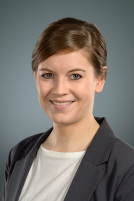
Thursday 17th December, 5pm via Zoom
Amygdala microcircuits for associative learning - Illuminating the function of deep brain circuits with optical methods
dr Sabine Krabbe, DZNE, Bonn, Germany
Learning and memory are fundamental neuronal processes that are essential for behavioral adaptations in an ever-changing environment. Mechanisms of memory formation are critically shaped by dynamic changes in the balance of excitatory and inhibitory neuronal circuit elements. Although local inhibitory interneurons only represent a minority of the cells in most brain areas, they can tightly regulate the activity and plasticity of excitatory projection neurons in a spatially and temporally precise manner. In this talk, I will demonstrate how we combine deep-brain imaging and optogenetics in freely behaving mice with neural circuit tracing approaches and electrophysiology to address interactions of distinct amygdala interneurons,

Thursday 19th November, 5 pm via Zoom
Evolution of Language and Cognition: Perspectives from Primate Neural Systems
Professor Christopher Petkov, Newcastle University, UK
How the human brain specialized for language and cognition is a fundamental question for the brain sciences, because it touches upon two issues: what makes us unique and what aspects of our cognition we share, and can thus be realistically neurobiologically modeled, with nonhuman animals? In this talk, I first consider new evidence from structural and effective connectivity studies in human and nonhuman primates, leading to a different way of thinking about how the human language system evolved. I then overview behavioral, neuroimaging and neurophysiological results using Artificial Grammar Learning tasks with monkeys and humans, including presenting work with patients that have Broca's aphasia using tasks that nonhuman primates can conduct.
Thursday 09th July, 11.00 am, Building 91 (IBIO), Room 001
On the fly. Principles of Tiredness and Memories.
dr David Owald, Charité - University Medicine Berlin
Animals need to integrate sensory information with internal states (such as hunger or tiredness) with acquired memories to reach informed decisions on what to do next. Our work addresses neural correlates of olfactory learning and internal state coding in the genetically tractable organism Drosophila melanogaster. Using methods to interrogate neurophysiological circuit and molecular synaptic mechanisms in the context of animal behavior, our recent work sheds light on evolutionarily conserved principles that underlying oscillatory network activity signaling sleep drive and the molecular receptor logic underlying memory-relevant plasticity of cholinergic synapses.

